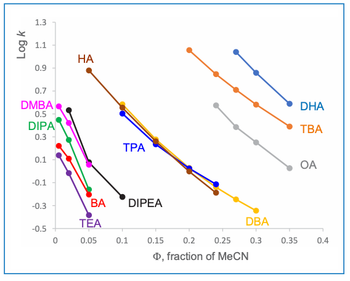Key Points
- Calendula officinalis L. flowers, more commonly known as marigold flowers, contain substances typically extracted with approaches like supercritical fluid extraction (SFE).
- Triterpenoid esters are hard to extract due to their chemistry; as such, the researchers created a method to do so using ultra-high-performance low pressure supercritical chromatography (UHP/LP-SFC).
- The method proved effective, optimizing the esterified triterpenoids' separatoin while letting their isomer structures be validated.
University of Orleans researchers (Orleans, France) created a new method for separating triterpenoid esters from Calendula officinalis. L flowers using ultra-high-performance low pressure supercritical chromatography (UHP/LP-SFC). Their findings were published in the Journal of Chromatography A (1).
The aster family (Asteraceae) of flowers consists of over 23,6000 species of herbaceous plants, shrubs, and trees across the world (2). Characterized by having composite flower heads and one-seeded achene fruits, extracts from Asteracease flowers (such as marigolds [Calendula officinalis. L] and Chysanthemum morifolium) are known for having numerous health properties, such as being anti-inflammatory, anti-oedematous, and providing wound healing benefits. The compounds responsible for these properties are mainly triterpenoids esters, laurate (C12), myristate (C14), and palmitate (C16), which are classified in different types: taraxastane for faradiol and arnidiol, oleane for maniladiol, and lupane for calenduladiol.
Extracting compounds from Calendula officinalis. L flowers is typically done using organic solvents, such as methylene chloride, hexane, or methanol, or through green approaches, like supercritical fluid extraction (SFE). This technique replaced non-aqueous reverse phase liquid chromatography (NARP-LC), which was previously the technique of choice. However, separating and identifying triterpenoid esters is not simple due to their having close skeletons and similar esterification locations by fatty acid chains.
In this study, the researchers demonstrated their creation of a method to separate triterpenoid esters using ultra-high-performance low pressure supercritical chromatography (UHP/LP-SFC). SFE was used to obtain the lipophilic fractions, in accordance with safety requirements from the cosmetic industry. Five coupled C18 columns were used, while an experimental design was used to optimize separation. The effects of temperature and mobile phase composition were studied, with five main criteria being considered: analysis duration, two discrimination factors of major triterpenoid esters, peak number and fully resolved peaks.
The modeling derived from the experimental procedures correlated to the studied analytical factors showed significant results for the analysis duration. This led to derringer functions to be employed to the criteria to select an optimal separation. With the finished product, the following conditions were reached: in less than 20 min at 20 °C, with 30% of a mixture MeOH/ACN 75/25 as a modifier mixed with carbon dioxide. Centrifu Centrifugal partitioning chromatography (CPC) fractionation and nuclear magnetic resonance (NMR) analysis of fractions collected by CPC enabled identification confirmation of the two main peaks as faradiol myristate and faradiol palmitate.
By using statistical tools and the procedures previously mentioned, the esterified triterpenoids’ separation was optimized, as obtained from sequential selective supercritical fluid extraction (S3FE) of calendula flowers. The experimental design enabled an experiment list to be produced following a Box–Behnken design (BBD) by exploring various condition combinations for the separation. Through statistical analysis of the experimental design responses demonstrated insufficiency to provide relevant predictions of the optimized conditions following statistical models. With a rationalized approach that uses Derringer functions, one condition could be calculated that offers the highest scores for separating the isomeric esterified triterpenes. The CPC fractionation allowed two groups of esterified triterpenoids to be recovered with C14 and C16 esters. Finally, NMR analysis allowed for the triterpenes’ isomer structures to be validated to be included in the two studied fractions.
References
(1) Atwi-Ghaddar, S.; Campos, P. E.; Destandau, E.; Lesellier, E. Separation of Calendula officinalis L Lipophilic Compounds Using Ultra-High Efficiency/Low-Pressure Supercritical Fluid Chromatography (UHE-LP/SFC). J. Chromatogr. A 2025, 1756, 466088. DOI: 10.1016/j.chroma.2025.466088
(2) Petruzzello, M. List of Plants in the Family Asteraceae. Britannica 2025. https://www.britannica.com/plant/list-of-plants-in-the-family-Asteraceae-2040400 (accessed 2025-06-02)





